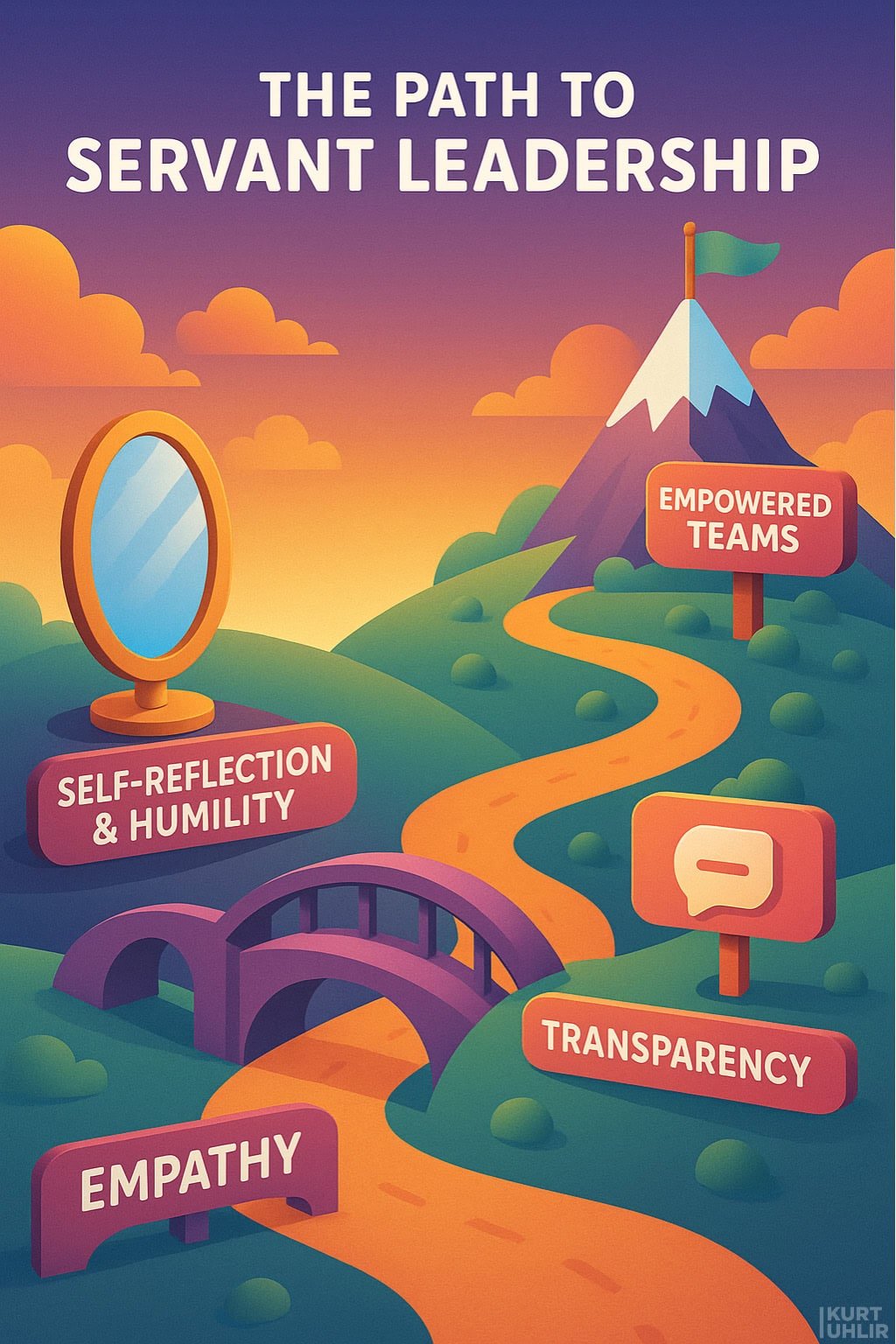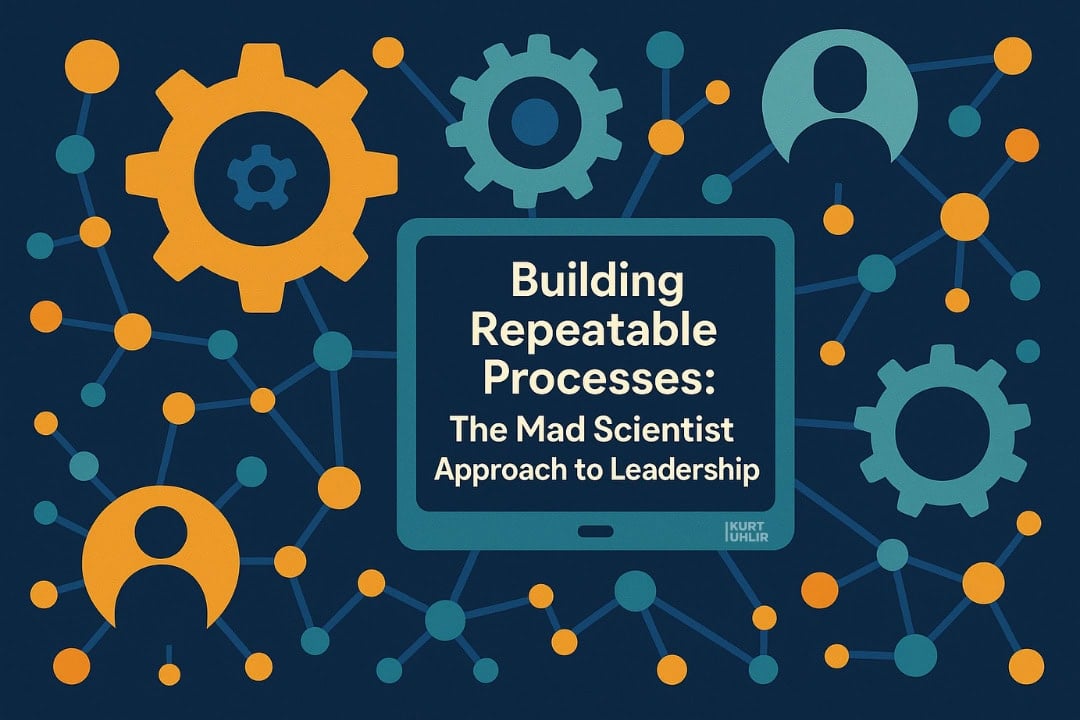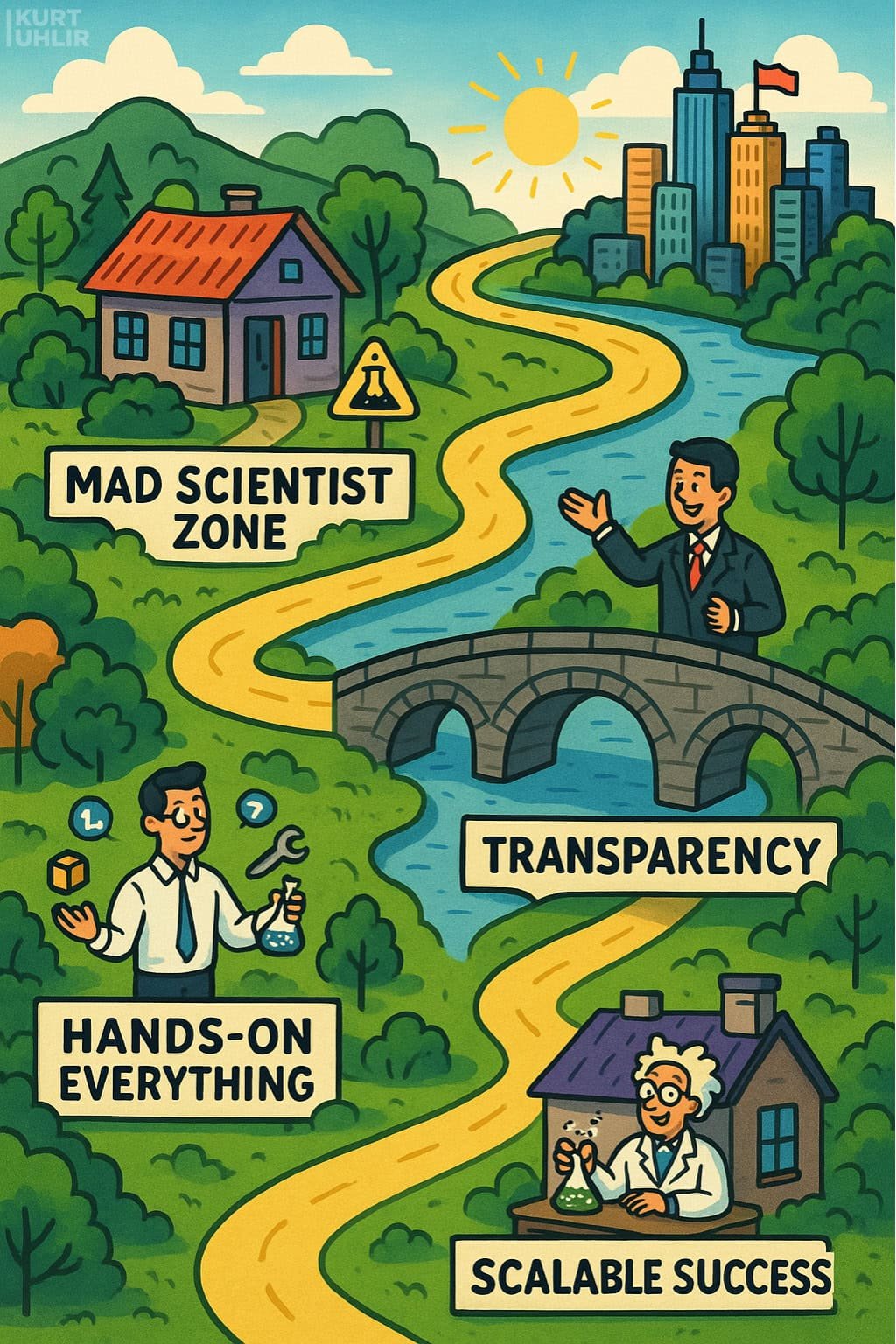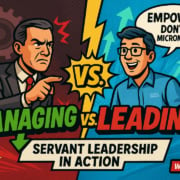Scaling with Purpose: My Discussion on High-Performing Companies with Corey Harlock
Leadership Isn’t a Job Title—It’s a Decision You Make, Every Day
Most business owners don’t wake up thinking, “I’m going to be the kind of leader my team brags about.”
They’re thinking about customers, cash flow, and that one employee who isn’t quite working out.
But here’s the truth I’ve seen play out again and again—from tiny family operations to companies on the verge of IPO and beyond: the foundational difference between management and leadership isn’t theory, it’s behavior.
How you show up—especially when things are messy—cascades across a business in ways most leaders underestimate. That’s why servant leadership isn’t just a philosophy to me; it’s the only practical path to scaling an organization that outlives your presence.
Why Leadership, Not Management, Holds the Keys
I’ve lived through the mistakes that come from mistaking authority for leadership: missed growth targets, stifled teams, and a culture that’s afraid of the truth. I’ve also seen firsthand the compounding impact when a team feels seen, trusted, and challenged—not coddled or controlled.
This isn’t about being soft. It’s about removing the bottlenecks that hold back results and creating companies that attract and retain people who take real ownership.
That’s why when Corey Harlock invited me onto the KeyHire Small Business Podcast, I didn’t hesitate. Corey’s built his career as the creator of KeyHire Solutions, where he’s helped countless small business owners scale by getting talent strategy right (the kind you wish you’d done three years sooner). He’s seen the guts of privately-held companies—what works, what falls apart, and what it actually takes to break through that dreaded growth plateau.
More than 6,000 people have downloaded the podcast on Apple and another 14,000+ people have already watched our talk on YouTube, with many more tuning in via Spotify and other platforms. So, the topics seem to relate for many people…
If this conversation sparks something for you—questions, pushback, or agreement—I’d love to hear your thoughts in the comments below. I read every one.

Authoritative Management Versus Actual Leadership
In most organizations, people use “leadership” and “management” interchangeably—as if controlling a payroll and steering a vision are the same thing. Let me be clear: they’re not even close.
The fastest way to stall a business is to conflate managing tasks with developing leaders.
If you’re constantly telling your staff how, when, and why to do things “your way,” you’re not leading—you’re managing. Or, in worse cases, micromanaging.
As Corey pointed out with his warehouse analogy: “If I told someone to sweep the warehouse, came back halfway through, and said, ‘No, you’re doing it wrong, let me show you how’—what have I actually accomplished?” Usually, I’ve stomped out initiative and missed the chance for a better process.
I’ve worked shoulder-to-shoulder with corporate execs who cling to the methods that got them here and miss the methods that could get them to $50+ million in revenue.
The humility to admit you might be wrong—sometimes painfully so—creates a feedback loop for growth. I know, from decades and 60+ capital raises and M&A projects, that I’m wrong about at least three things in my business right now. The risk isn’t just that I’m wrong; it’s that I don’t realize it, or worse, that no one on my team feels safe enough to tell me.
Keep reading any you’ll uncover that you’re wrong about multiple things in your business right now – things you think you are correct about. Imagine how much time you’ll save when you discover those things today, instead of 12 months from now.
When you build a culture where team members become passive or fearful of challenging the boss, you guarantee stagnation. Authoritative leadership isn’t scalable. It demands that you are always right and always present. When a family emergency or big life event happens—and it will—that approach leaves everyone worse off.
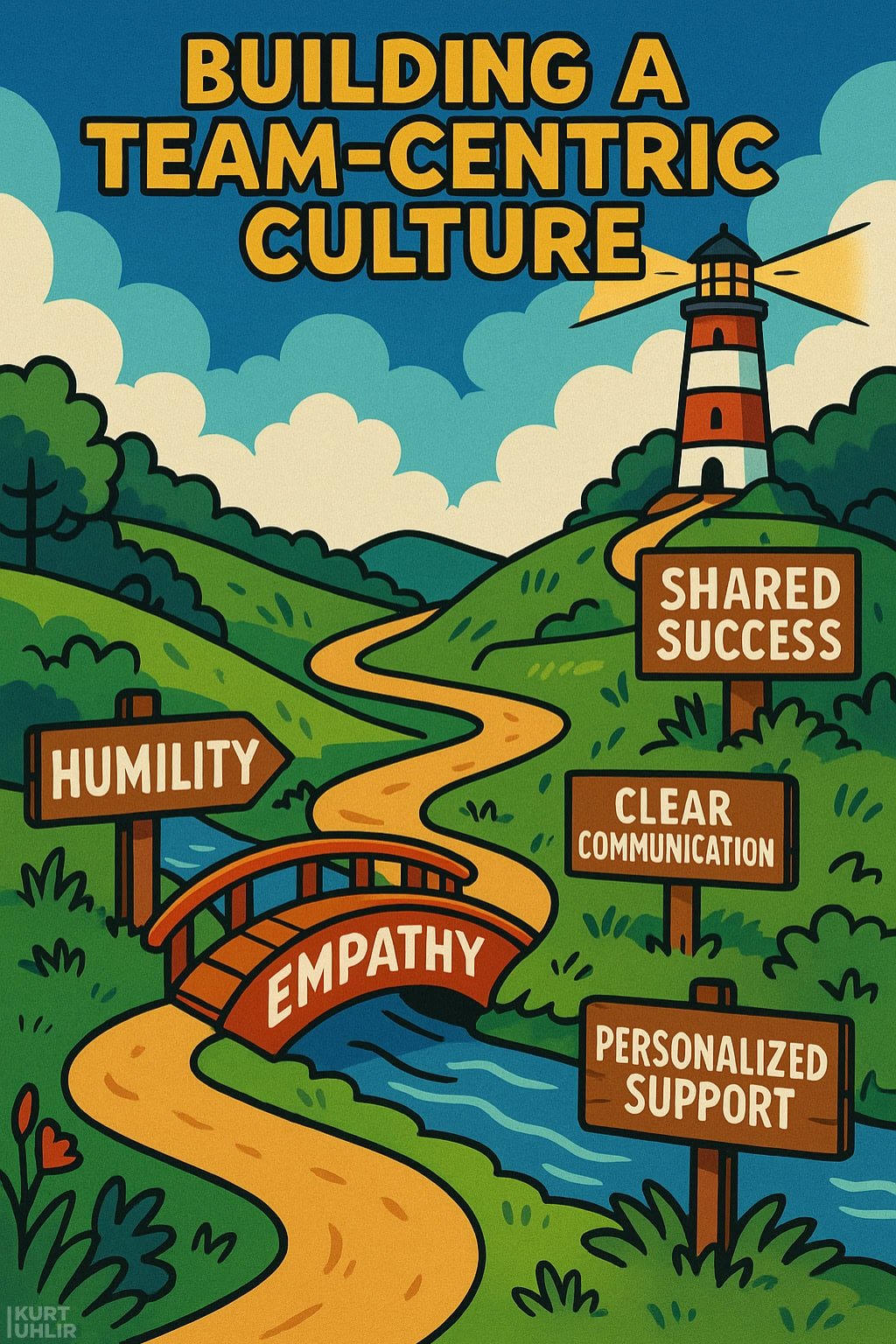
The Coaching Mindset: Leading for Outcomes, Not Just Tasks
Coaching, in my world, isn’t about formal, scheduled one-on-ones or employee improvement plans.
It’s about hiring people capable of achieving key business outcomes—and then focusing every ounce of your energy on helping them succeed, not just survive.
I often describe my job, post-hire, like this: I’m here to remove obstacles, clarify outcomes, and help you perform at your best. I can’t expect to know every answer, and frankly, if you can’t teach me a better way to do at least some parts of your role, that’s a hire I shouldn’t have made.
Corey nailed this distinction:
“Don’t manage the process; manage the end result.”
He shared how a college professor of his described the “cat box theory”—so long as the cat uses the box, there’s no problem. The moment it doesn’t, that’s when intervention is needed. It sounds silly, but it’s dead-on for managing adults.
Set wide parameters, give context, and let people use their judgment. If you intervene every time someone does things differently—with no damage to outcomes—you’re sabotaging your own growth engine.
This approach demands trust: both that you’re hiring adults, and that you’ll act like one too. Teams want clarity on what success looks like, not a step-by-step on how to chase it. And when the occasional miss happens, you coach—not to punish, but to build up.
The secret most leaders overlook is that almost nobody loves to be micromanaged.
People show up with the intention to do a good job. When performance lags, as Corey stressed in his story about an underperforming employee, the first move shouldn’t be to fire. It should be to ask, “Are you okay? Is there something going on?” Life is messy, and sometimes what your company needs most is scaffolding, not a chopping block.
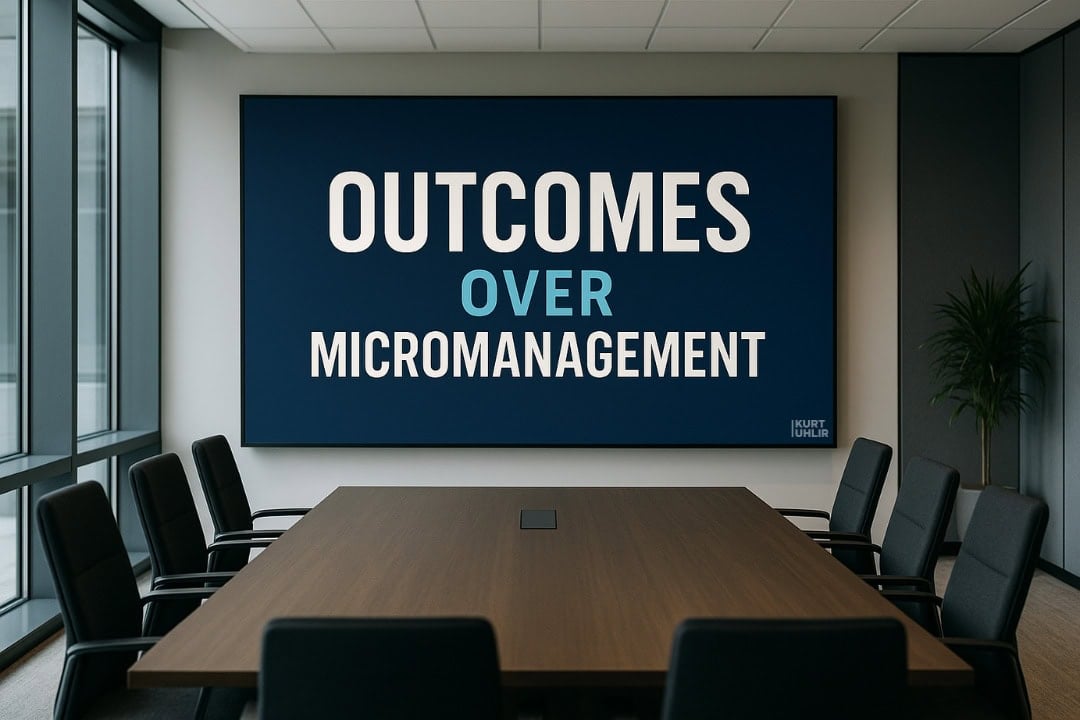
Servant Leadership: What It Actually Looks Like on the Ground
Much of what’s written about servant leadership is either moralistic or just vague. I get it—a lot of the roots trace back to religious tradition, and there’s a mountain of chatter online about leading with empathy, “putting others ahead of yourself,” or “supporting your people.” Those are great intentions, but there’s a business case for the results of servant leadership that rarely comes up.
For me, servant leadership means being radically practical: I’m paid to accomplish business results, and my responsibility is to set others up to do the same at the highest possible level.
Sometimes, the highest-value work I can do is ordering dinner for the engineering team, so they can ship a release on a tight deadline. Other times, it’s coaching my managers through hard conversations with their direct reports. Sometimes it looks like stepping away from a part of the company, so someone else can own and scale it.
Empathy is part of the toolkit. But equally essential is candor, accountability, and clarity of desired outcomes. I’m never going to be the leader who tells you what you want to hear at the expense of what you need to know.
I hire people to deliver outcomes.
My job is to serve them to make sure they reach those outcomes, by providing context, feedback, and resources.
The “serving” part isn’t about being everyone’s friend or protecting their comfort zones. It’s being real about expectations and how their role fits into the business mission—and then delivering on the promises I make as their leader.
Corey emphasized this, too, describing the essential reality small business owners have to face: your business eventually outgrows the friends, family, and loyalists who poured everything into getting you to this point. He summed it up perfectly:
“Eventually, that business will outgrow all their experience…That is the hardest decision you’re ever going to have to make.”
It’s a moment he’s coached countless leaders through—one that calls for honesty and respect, not avoidance or cruelty.
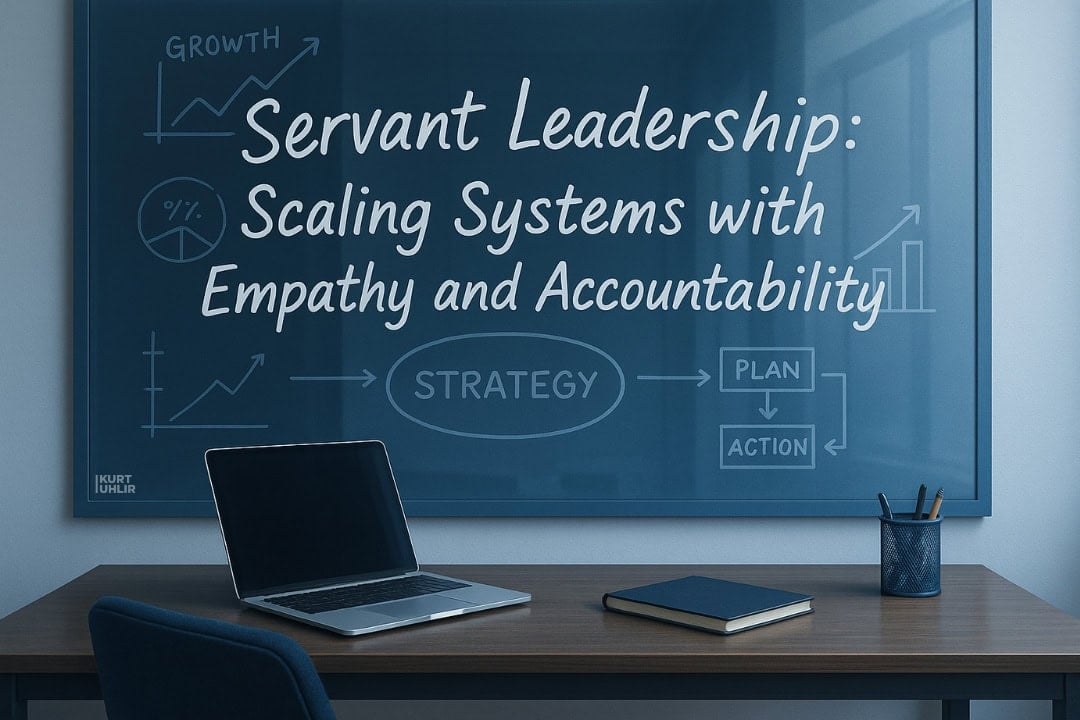
Navigating Tough Conversations—and Why Most Leaders Fail Here
The real test of servant leadership isn’t in the easy moments where everything’s humming; it’s in the hard conversations when someone’s falling short.
Most people avoid them, hoping the situation will miraculously fix itself or the employee will “get the hint.” That’s not leadership. That’s abdication.
Healthy conflict, openly addressing issues, is a non-negotiable part of leadership in my playbook. I put it in every job description: I’m looking for people who accept and thrive in healthy conflict. It’s the only way we get better, faster, and more resilient.
If someone is struggling—especially a top performer whose life just got upended—your best bet is to dig in. Sit them down and ask, “What’s changed? What’s going on? How can we help?” It isn’t just the right thing to do as a human being; it’s also a smarter business decision. The cost and risk of firing and rehiring is enormous, particularly for high performers with deep business knowledge.
And yet, as Corey points out, many leaders default to ultimatums: “If you don’t hit your numbers, you’re out.”
That’s not a coaching approach. That’s gambling on people being mind readers.
Far better: “Let’s work together for a few days; let me show you what I’d do, let’s pull up alongside each other.” That’s where performance turns around—or, if it doesn’t, at least you know you’ve done the hard work as a leader rather than ducking responsibility.
Every time I hear, “If it doesn’t work out, we’ll just fire them,” it sets off alarms. If you’re making senior hires without clear expectations, training, or context, you owe your people—and your business—better.
We’re talking about families, mortgages, medical coverage and reputations on the line. People are not disposable resources.
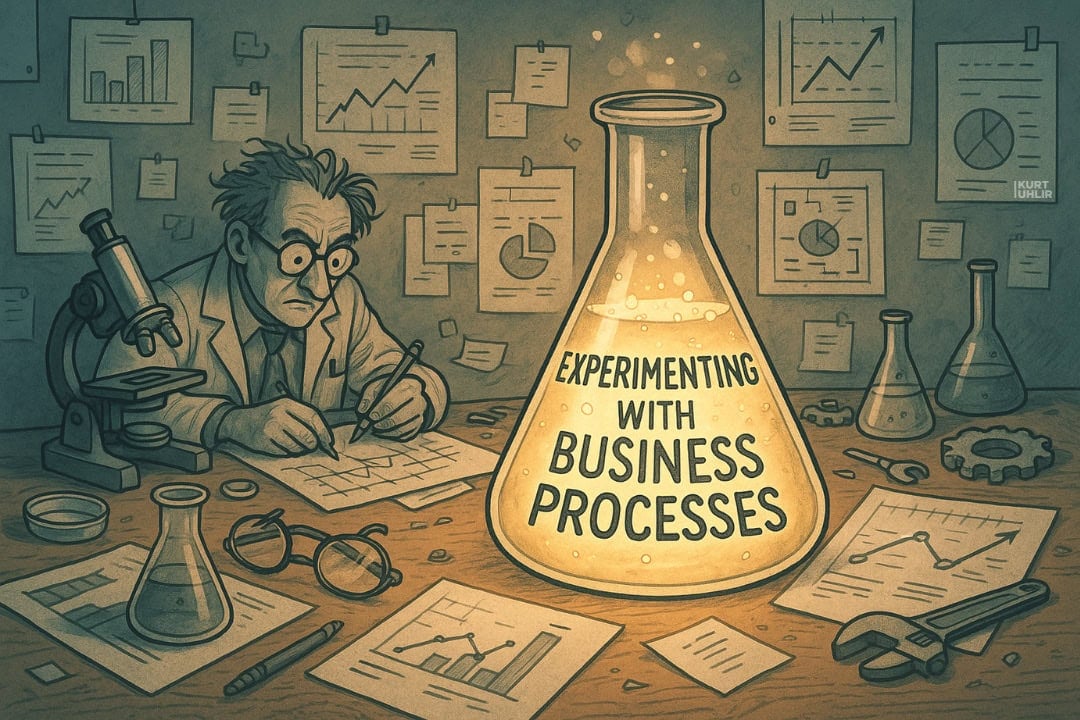
Scaling Smart: From Mad Scientist to Repeatable Systems
One of the patterns I’ve seen in every genuinely scalable business is this: founders let go, but only at the right time and in the right way.
Too many leaders swing wildly between micromanaging (“do it exactly this way”) and abdicating (“just figure it out, I’m busy”).
My advice: hand off responsibilities only once you’ve made the process truly repeatable, and be brutally transparent while you’re building it. Spend your energy on “mad scientist” mode—experiment, iterate, and break things until you find an approach that can be handed off.
Let your team peek inside the process. Let them see both your failures and your wins. This isn’t just about knowledge transfer; you’re modeling the permission to iterate and to admit when you’re wrong.
Only once you can codify what “good” looks like, and you know why it works, should you step aside. And then, open the door to further improvement—not by fiat, but through shared context.
I’ve lived this at scale—building marketing engines for companies from $10M to multiple-billions of revenue, like eXp Realty, where we took the business from the #15 brokerage in the United States to #1.
That didn’t happen because we wrote the perfect SOP on day one. It was months of micro-experiments, mistake after mistake. But I kept my team looped in the whole time, so that when we finally “got it,” onboarding others was natural, fast, and fundamentally sustainable.
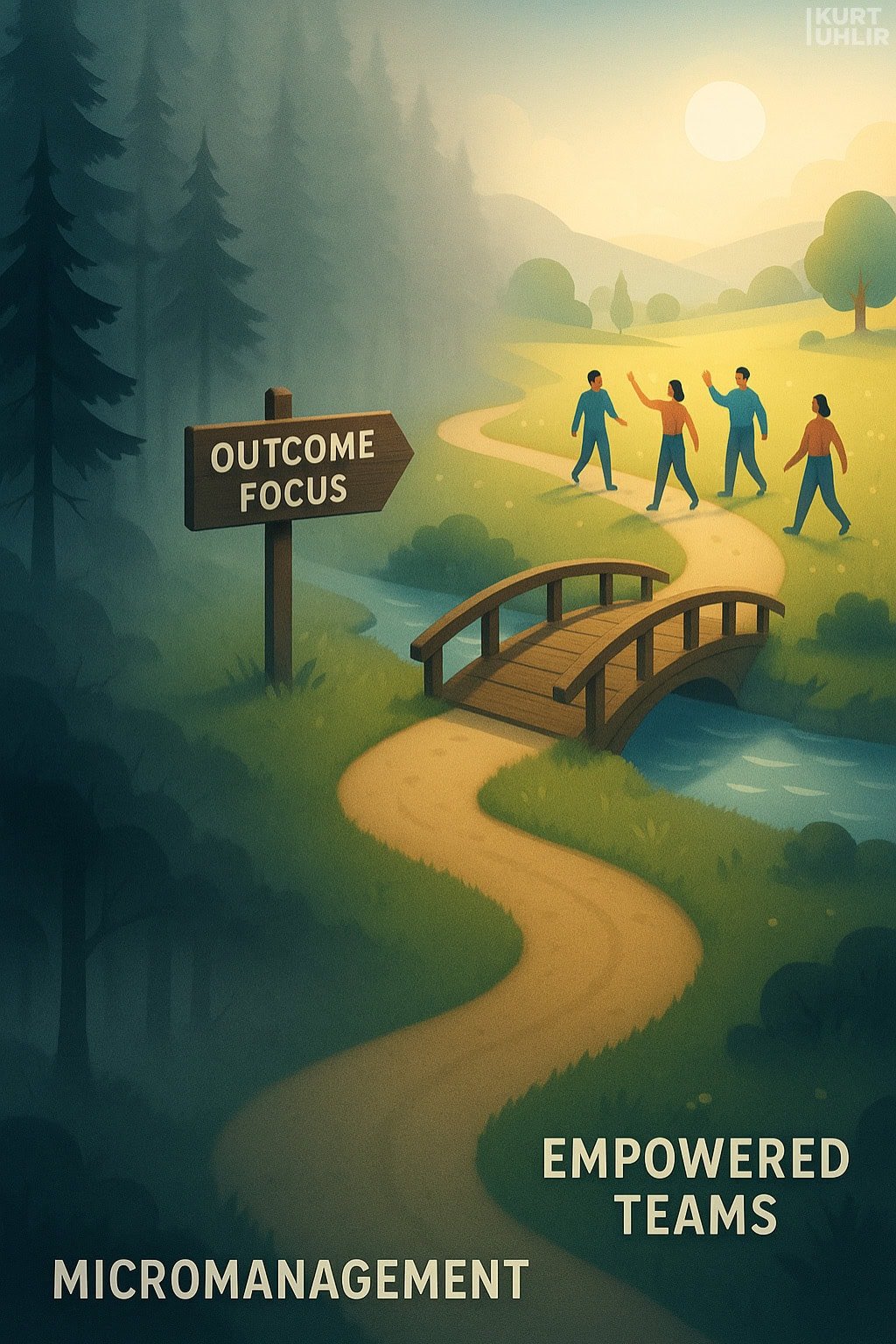
The Anatomy of a Team That Actually Grows
Hiring adults and treating them like adults sounds obvious, but how often do you see it done?
Too many leaders conflate caring about people with letting standards drop, or think that tough conversations make you a bad boss.
Reality: the best cultures are built around mutual accountability, not just warmth and affirmation.
Every new hire is unique. They have different communication styles, needs, and preferred forms of recognition. The investment you make in understanding “how they’re weird” (as I tend to put it) is often the most underappreciated leverage point in scaling a business. It’s not just about upskilling; it’s about personalization of leadership, without becoming “everyone’s parent.”
We’re not managing a faceless department; we’re building a team of individuals who bring their full selves to the job. When you know who they are—how they respond to stress, praise, redirection, what their personal motivators are—everything changes. Turnover drops, performance rises, and your best people are less likely to walk out the door just to make a few more bucks somewhere else.
Corey’s sales pitch to prospective candidates for his clients is pragmatic and true: “This is a great company. They hire good people and then treat them like adults.” That’s not a tagline; it’s a differentiator in today’s market, especially with younger generations increasingly intolerant of command-and-control management.
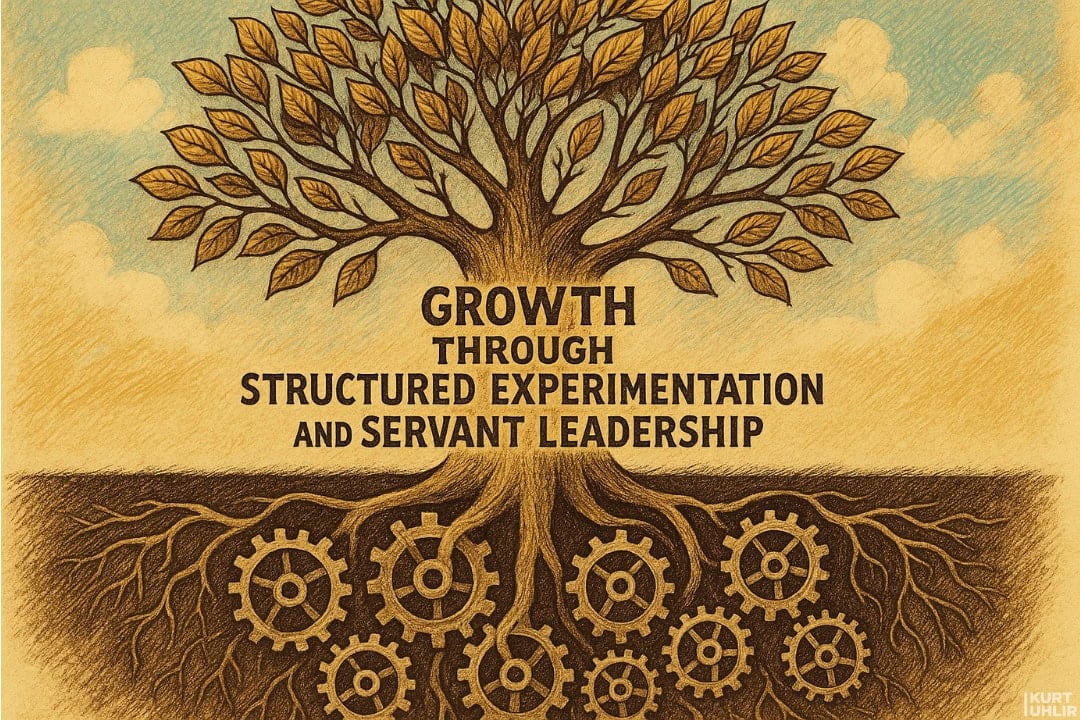
Ownership, Humility, and the Power of “It’s My Fault”
If I had to pick one leadership muscle that correlates to lasting impact, it’s humility. The day you realize everything in your company/team is your fault—the good, the bad, and the ugly—is the day you start to gain real leverage.
I urge every founder, owner, or executive who wants to grow: spend time each quarter with a blank document and a blunt self-assessment.
List every major headache or recurring problem. Then, under each item, write down the part you played. Were you unclear about expectations? Did you hire too fast or abdicate too soon? Did you avoid a tough conversation because it made you uncomfortable?
Don’t just think through this alone. Share it, at least in part, with trusted partners or managers. Invite feedback. You’re modeling the kind of radical ownership you want your team to emulate. When you do, the culture shift is immediate: people feel safe to surface issues early, experiment without fear, and call you out when you’re the bottleneck.
As Corey quoted from a podcast he’d heard: “The most freeing thing I ever did was realize everything was my fault.” It’s a hard pill to swallow on the first try. Eventually, it becomes the simplest path to relentless improvement.
Sometimes your business will outgrow the people who helped you build it. Those moments are never easy. But if you’ve led with humility, had the hard conversations in advance, offered support, and given runway for those affected, transitions can be dignified for everyone involved.
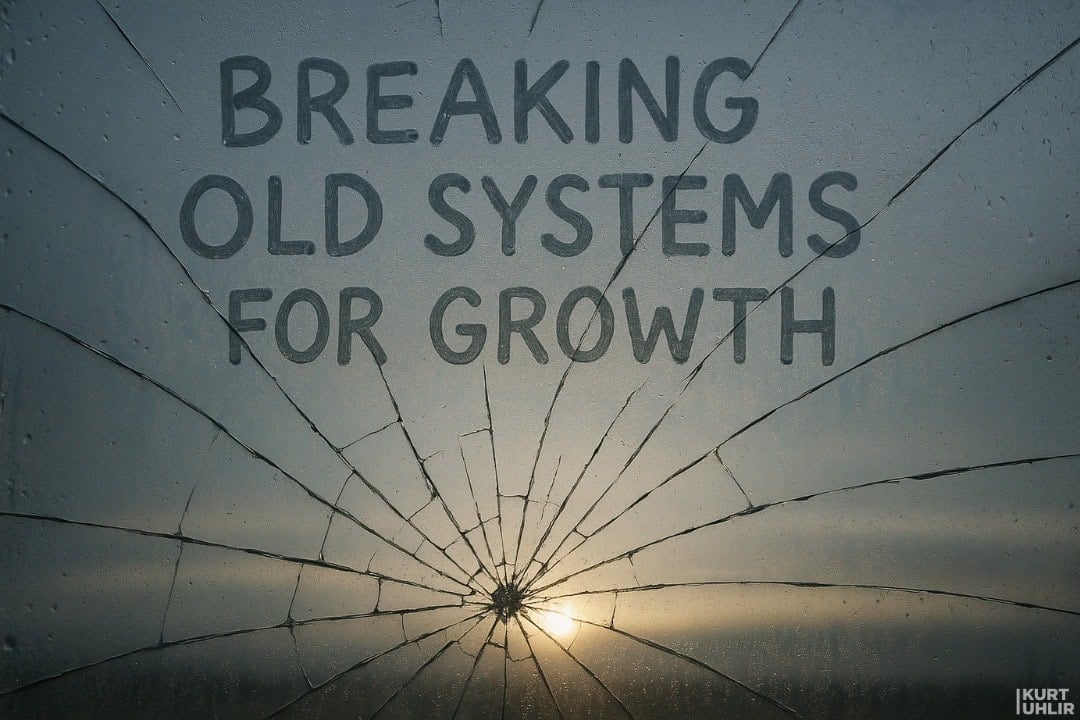
The Real Power of Servant Leadership
Servant leadership, done right, is the most aggressive, performance-driven approach I know. It just avoids the short-term traps of ego and control that hold most leaders back.
It’s not for the faint of heart. It demands vulnerability, constant execution, and a willingness to confront yourself first. But the ROI is there: teams learn to think for themselves, innovations surface faster, and your business develops the resilience to thrive with or without you in the room.
You will make mistakes. You will get it wrong—sometimes catastrophically. I have. But if you can own your part, stay relentlessly focused on building others up, and fight for clarity over comfort, you’ll create a culture that wins in the long run, both for your bottom line and for the families depending on you.
If anything in this reflection has you nodding—or fired up with disagreement—let’s keep the conversation going below. I read every comment. The work of leadership isn’t lonely unless you let it be.
– Kurt
Questions to Consider
Sure, here are 10 discussion questions based directly on this episode’s conversation between Corey Harlock and me, Kurt Uhlir. These are designed to spark deep thinking and real-world application:
- How do you personally distinguish between management, leadership, and servant leadership in your own organization?
What signs tell you if you’re managing versus truly leading? - Why do you think so many small business owners default to micromanagement, even if it hurts long-term growth?
Have you experienced this in your own career? - Discuss a time when being an “authoritative leader” backfired or limited growth.
What might have gone differently with a servant leadership approach? - Kurt mentioned that ‘generalists outperform specialists’ in scaling companies.
In what situations do you agree or disagree, especially when building small business teams? - How do you create an environment where team members feel safe enough to admit mistakes or bring new ideas, especially if they might contradict your own?
What practical methods have worked for you? - What’s your process for identifying whether a task or system within your business is truly repeatable and ready to delegate?
How do you avoid handing something off too early? - Share an example where a business owner’s inability or unwillingness to have tough, honest conversations (with themselves or their team) hurt the company’s growth or culture.
What was the outcome? - Why is humility such a foundational trait for servant leadership, according to this conversation?
Where do you see a lack of humility causing problems in business or leadership today? - When life gets messy—illness, family emergencies, mental health struggles—how should leaders balance empathy with business needs?
Is there a “right answer,” or is it always situational? - Why do you think so many businesses fail to move beyond the stage their early team can handle?
If you were counseling an owner facing this, how would you help them move past the emotional and practical hurdles?
Feel free to use these for group discussion, leadership workshops, or personal reflection as you think through the themes of this episode.
Memorable Corey Harlock Quotes
- “No one ever says, ‘Man, I love to be micromanaged.’” – Corey Harlock
- “Your way might be worth $10 million of business, and someone might have a way that could get you $50 million of business. But you’re so stuck on, this is what got me here.” – Corey Harlock
- “These are people with lives, right? They got families, they got kids in school, they got mortgages. And that whole adage, ‘Well, if they don’t work out, we’ll just fire them.’ That makes my skin crawl.” – Corey Harlock
- “One of my biggest sales pitches—I’m like, man, this is a great company. They hire good people and then treat them like adults.” – Corey Harlock
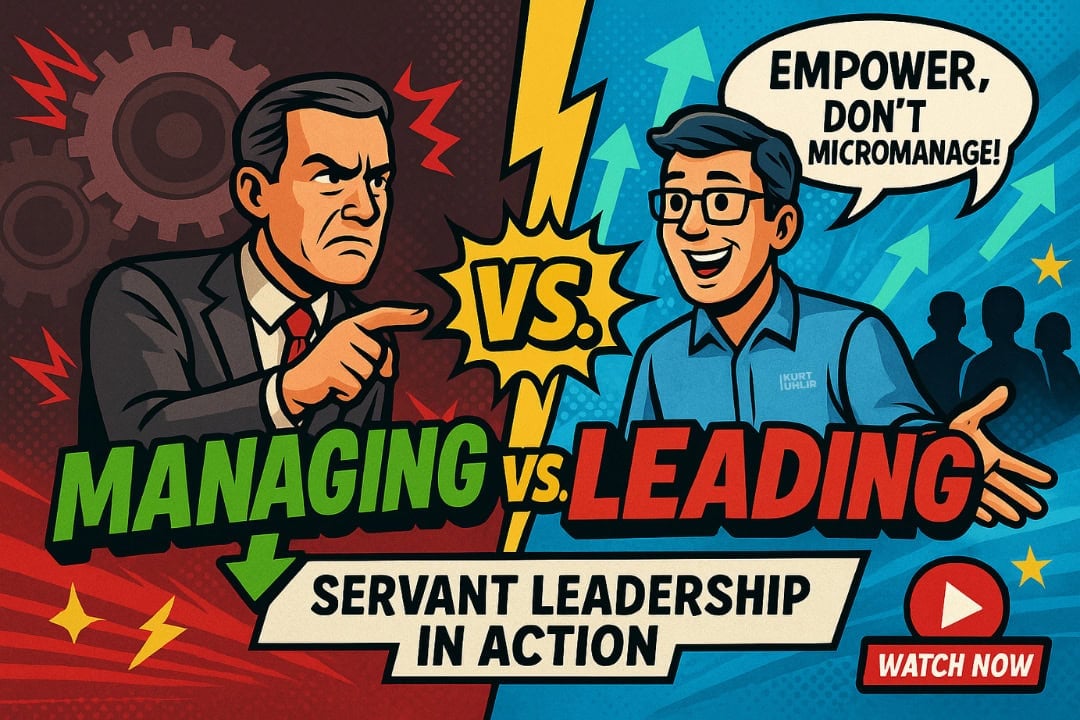
Memorable Kurt Uhlir Quotes
- “Management is about controlling people. Leadership is about unleashing them.” – Kurt Uhlir
- “Servant leadership isn’t just about being nice—it’s about ruthlessly focusing on outcomes for your team and your customers.” – Kurt Uhlir
- “Empathy isn’t just moral, it’s practical. If you aren’t creating space for people to be human, you’re losing out on productivity and profit. People don’t leave jobs—they leave managers.” – Kurt Uhlir
- “As a servant leader, my job is every day to step in and ask myself 1) are there are there things that I need to be doing that only I can do to serve the company? 2) how do I serve you as somebody that I’ve employed or somebody that is leading other people that we’ve employed to accomplish those outcomes that we want?” – Kurt Uhlir
- “You should hand off as much as you possibly can in your business so that you can be the mad scientist and figure out something new in your business.” – Kurt Uhlir
- “The underlying thing is either you’re hiring the wrong type of person or, or you’re not coaching or training them and providing an environment, but it’s either way, it’s your fault that they’re your company.” – Kurt Uhlir
- “A key piece about servant leadership is whether the success and outcomes or the failure and outcomes, you have a part in it.” – Kurt Uhlir
- “I know I am wrong about at least three things in my business today that I think I’m right about. The only way to catch that is to build a culture where my team has the freedom to push back.” – Kurt Uhlir
- “If you want a business that grows, you have to be willing to break what got you here. Sometimes that means you’re going to hear, ‘Your baby’s ugly,’ and you need to be okay with that.” – Kurt Uhlir
- “Sometimes, the best way to serve is getting out of the way.” – Kurt Uhlir
- “As a leader, my job is to help you be more productive and profitable tomorrow than you are today. That starts with caring about you as a person.” – Kurt Uhlir
- “If your people can’t tell you bad news before they tell their own family, you’ve got a trust problem. Get that right and you’ll never be blindsided.” – Kurt Uhlir
- “Everything in my company is my fault. When you realize that, it’s overwhelming at first—but then it becomes freeing, because now you can actually fix it.” – Kurt Uhlir
- “Your job as a leader isn’t to hold people’s hands—it’s to create an environment where they hold themselves accountable, and you treat them like adults, not kids.” – Kurt Uhlir
